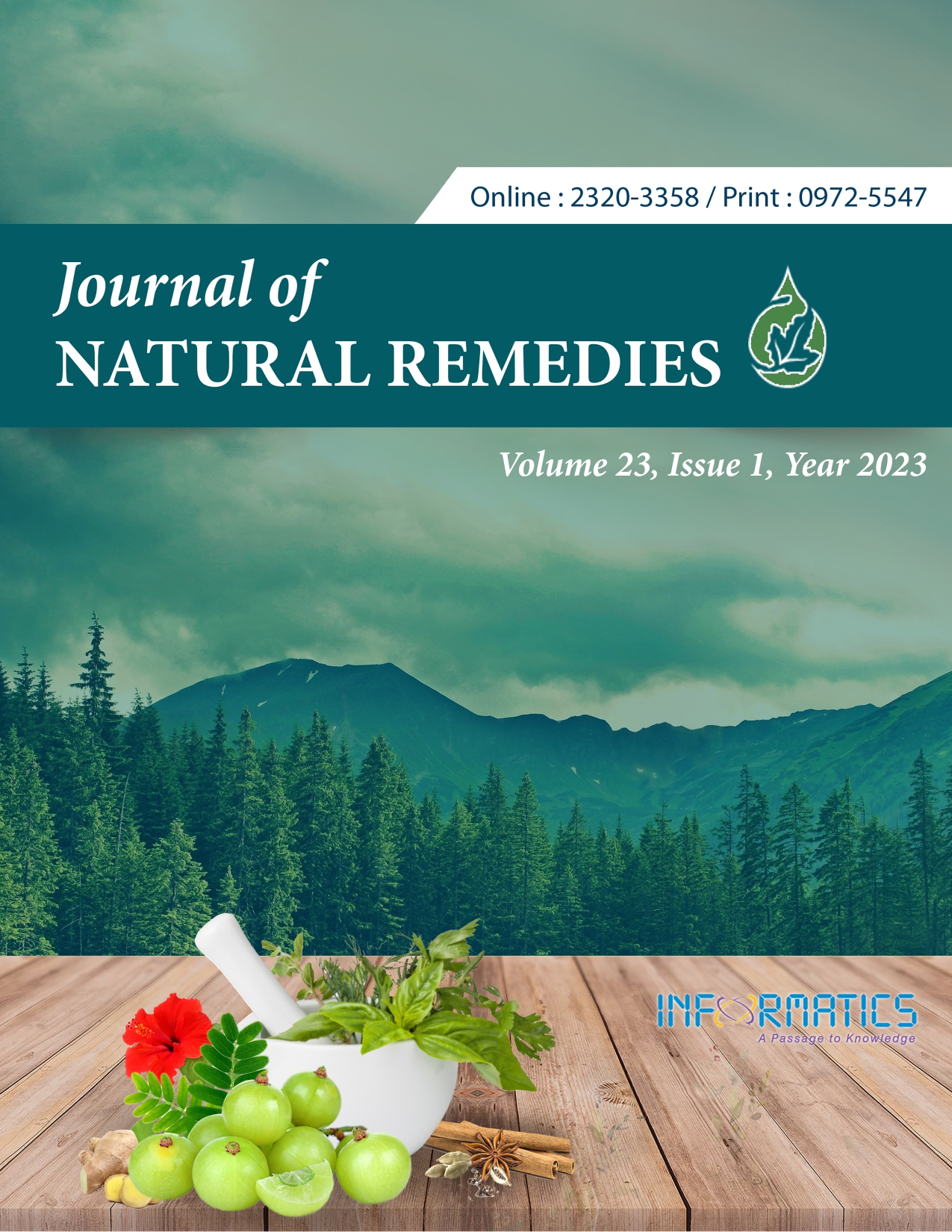Green Synthesis of Silver Nanoparticles using Lantana camara Leaves Extract and In Vitro Evaluation of Oral Anti-cancer Activity
DOI:
https://doi.org/10.18311/jnr/2023/30755Keywords:
AgNPs, Green Synthesis, Lantana camara, Oral Carcinoma, Plant Extract, SCC-25.Abstract
At present, green synthesized based drug delivery systems play a major role in the bio medical field. Lantana camara, also known as Unni chedi in Tamil, is an evergreen shrub that is involved in a variety of cancer diseases due to its pharmacological activity. In addition, the leaf extract of Lantana camara was found to have excellent anti cancer activity. The green synthesized AgNPs of Lantana camara leaves extract were more efficient against oral cancer. In this report, green synthesized nano-formulations in presence of AgNPs were formulated. The as prepared formulation was confirmed by UV spectroscopy, particle size and zeta potential, Scanning Electron Microscopy (SEM). In UV Spectroscopy the absorbance of the peak appears between the range of 200 to 300 nm corresponding to the formulation of AgNPs. The Zeta potential shows high colloidal stability; the average potential value is -12.6mV. The particle size results shown that the average size of AgNPs is 268.1 nm. The morphology and particle size determined using SEM analysis indicate spherical shaped particles. Further, the oral anti-cancer activity was evaluated on Squamous Cell Cancer (SCC-25) cell line. The cell line result shown is that the IC 50 value for AgNPs was 39µg/ml and the plant extract shown 145µg/ml, this indicates that the silver nanoparticles have more potential when compared to the leaf extract.
Downloads
Metrics
Downloads
Published
How to Cite
Issue
Section
License
Copyright (c) 2023 GAYATHRI KUMARARAJA

This work is licensed under a Creative Commons Attribution 4.0 International License.
Accepted 2022-12-28
Published 2023-03-23
References
Sanjeeb Kalita Gk, Loganathan K, Kokati Venkata Bhaskara R, A Review on Medicinal Properties of Lantana camara Linn. J Pharm and Tech 2012; 5(6): 711-715.
Sharma OP, et al., A review of the hepatotoxic plant Lantana camara. Crit Rev Toxicol. 2007; 37(4):313-52.
Ghisalberti EL, Lantana camara L. Verbenaceae.2000;71(5):467-486.doi: 10.1016/s0367-326x(00)00202-1.
Sharma P, Makkar HPS, Dawra PRK, and Negi SS. review of the toxicity of lantana camara (linn) in animals.Clin Toxi 1981;18(9):1077-94. doi: 10.3109/15563658108990337.
Kato-noguchi H, Kurniadie D. allelopathy of Lantana camara as an Invasive Plant. Plants (Basel) .2021;10(5):1028.
Montero PH, Patel SG. Cancer of the oral cavity. Surg Oncol Clin N Am. 2015;24(3): 491-508.
D'Souza S, Addepalli V,et al., Preventive measures in oral cancer: An overview. Biomed Pharmacother. 2018;107:72-80.
Wong T, Wiesenfeld D. Oral Cancer. Aust Dent J. 2018 ; 63(1):S91-S99.
Marimuthu S, Arul Jayanthi, Sankar malayandi, et al., Silver nanoparticles in dye effluent treatment: A review on synthesis, treatment methods, mechanisms, photocatalytic degradation, toxic effects and mitigation of toxicity. J Photochem Photobiol B. 2020;205:111823.
Abbasi E., Morteza M, Sedigheh fekri A, et al., Silver nanoparticles: Synthesis methods, bio-applications and properties. Crit Rev Microbiol, 2016. 42(2):173-80. doi: 10.3109/1040841X.2014.912200.
Mathur P, Swathi J, et al., Pharmaceutical aspects of silver nanoparticles. Artif Cells Nanomed Biotechnol. 2018;46(1):115-126.
Ajitha B, Ashok Kumar Reddy Y, Sreedhara Reddy P. Green synthesis and characterization of silver nanoparticles using Lantana camara leaf extract. Mater Sci Eng C Mater Biol Appl. 2015; 49:373-381.
Henry F. Aritonang HK, Audy DW. Synthesis of Silver Nanoparticles Using Aqueous Extract. Hindawi Int Jou of Micro.2019;1-8.
Ajitha B, Syed Shameer YAKR, Rajesh KM, Suneetha Y, Sreedhara Reddy P, Lantana camara leaf extract mediated silver nanoparticles Antibacterial. Jou of Photochem and Photobio B: Biology.2015;149:84-92. doi: 10.1016/j.jphotobiol.2015.05.020.
Malviya R, P. Sharma PK , Dubey SK. Stability facilitation of nanoparticles prepared by ultrasound assisted solvent-antisolvent method: Effect of neem gum, acrylamide grafted neem gum and carboxymethylated neem gum over size, morphology and drug release. Mater Sci Eng C Mater Biol Appl.2018; 91:772-784. doi: 10.1016/j.msec.2018.06.013

 Gayathri Kumararaja
Gayathri Kumararaja









 0.35
0.35 24
24 0.161
0.161